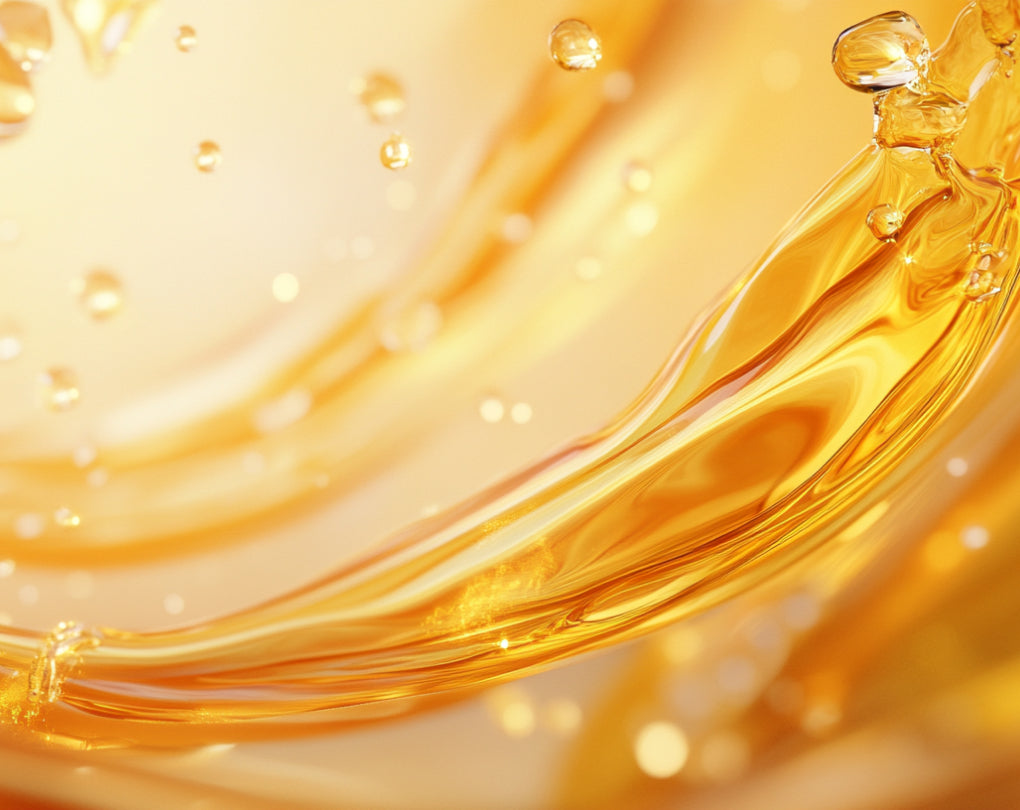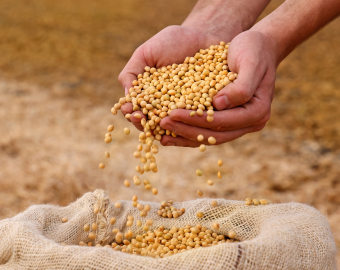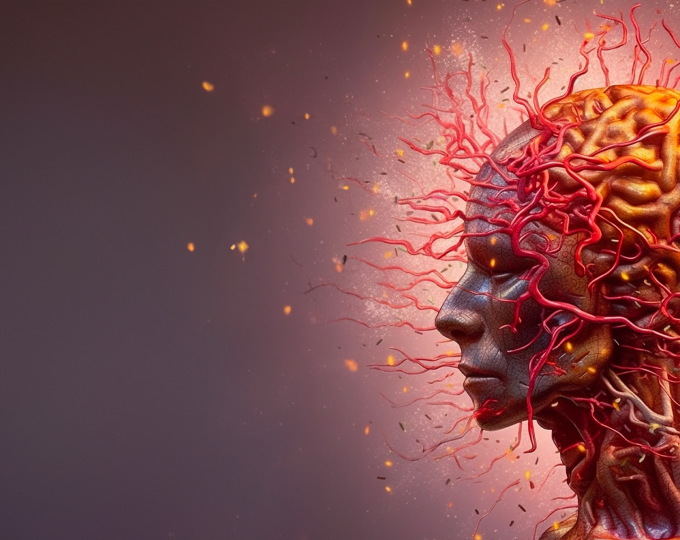Themen dieses Blogartikels:
Table of Contents
- Blood and iron: How the two are connected
- What role do erythrocytes play?
- How does iron deficiency develop? Causes and triggers
- Causes of iron deficiency in women
- What causes iron deficiency in men?
- Further causes of iron deficiency
- Recognize iron deficiency: Look out for these symptoms
- What happens with iron deficiency?
- How to cover your iron needs
- How much iron per day does the body need?
- Which foods contain iron?
- Optimize iron absorption: These nutrients will help you
- What is special about lactoferrin?
- Conclusion about iron deficiency
- Bibliography
Introduction
Even in countries where everything is available in abundance, there are nutrient deficiencies. One example of this is iron deficiency: the German Society for Hematology and Oncology estimates that an average of 5 to 10% of the population is affected¹. In Germany alone, that is over 8 million people - as many as live in Munich, Hamburg, Berlin, Cologne and Düsseldorf combined.
To understand the dangers of iron deficiency, let's first look at what role the trace element iron plays in the body and why full iron stores are so important.
Blood and iron: How the two are connected
If veins are the highways of our body, then the components in the blood are the trucks that transport vital substances from A to B. Blood consists of liquid blood plasma, which contains proteins such as antibodies, electrolytes and fibrinogen, a precursor of fibrin, which is relevant for blood clotting. On the other hand, the following elements form the solid blood component:
- White blood cells are part of the immune system
- Platelets are involved in wound healing and blood clotting in the body
- Red blood cells (erythrocytes) make up the largest proportion of solids in the blood at around 40% - the most important tasks of red blood cells include transporting oxygen and carbon dioxide
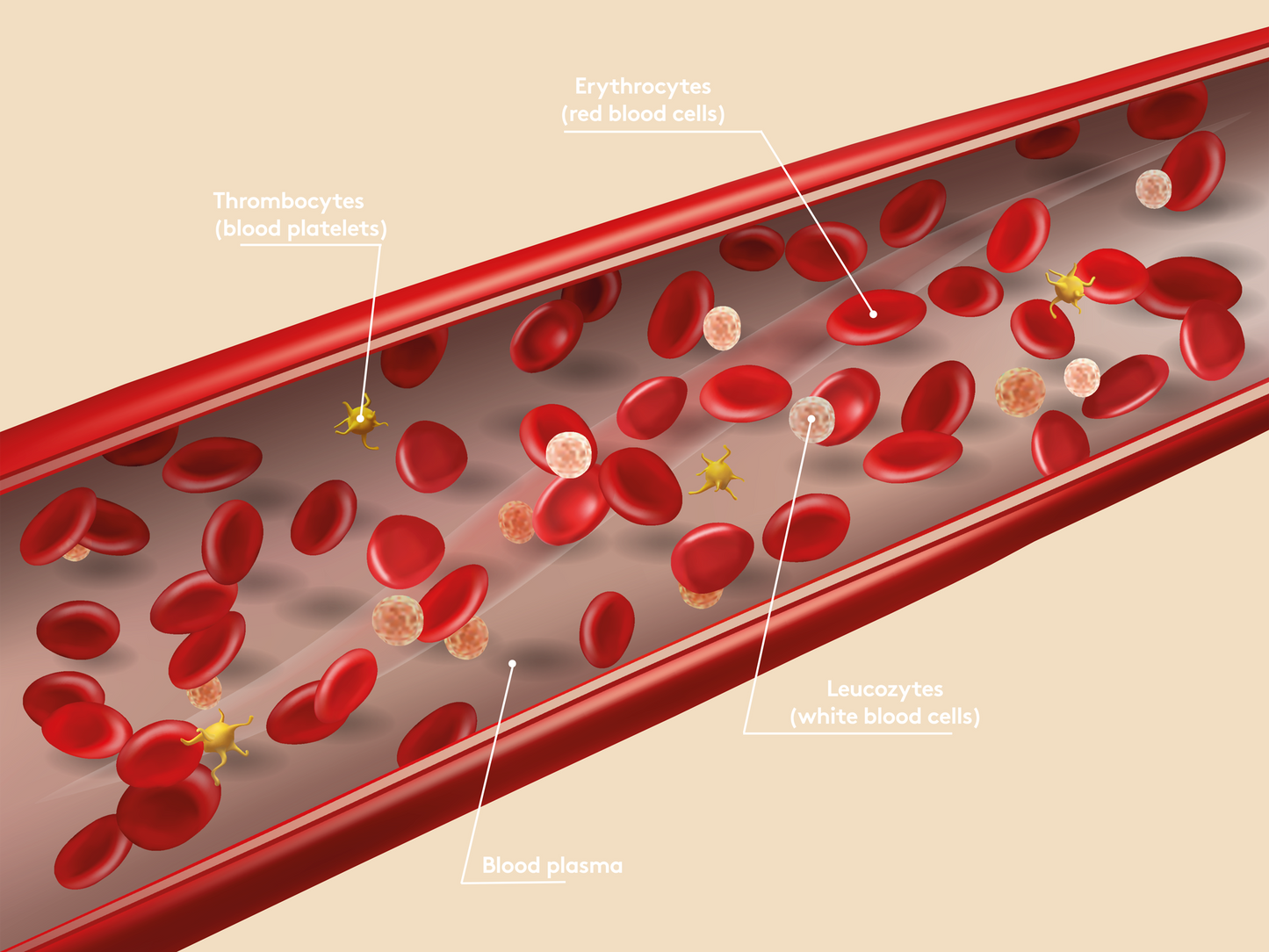

Erythrocytes
These "cells" have a simple structure. They no longer contain cell organelles, i.e. no mitochondria for energy synthesis and no cell nucleus with DNA. Therefore, they are not classified as true cells and are severely limited in what they can do. Their shape corresponds to a biconcave disk, since there is a trough in the center due to the lack of a nucleus.
Erythrocytes are also the reason for the red color of blood, as they contain the pigment hemoglobin and make up the largest proportion of blood, approximately 40%.
Their main function is to transport oxygen and carbon dioxide in the blood. Our cells need oxygen to enable metabolic processes to run efficiently. If our brain is not supplied with oxygen for just a few seconds, loss of consciousness occurs.
After a few minutes, irreversible damage and death of brain cells already occurs. Because erythrocytes make up the largest proportion of the solid components of the blood, they are also an important buffer system of the body, for example for the acid and base balance.
The protein hemoglobin, which is the main component of erythrocytes, is responsible for oxygen transport. There are approximately 280 million hemoglobin molecules in a blood cell.
In addition, the heme group contains the functionally important iron atom. Iron holds the heme group together and is also the site of oxygen binding. An iron atom of a heme group binds an oxygen or carbon dioxide molecule.
Thus, one hemoglobin binds four such molecules (at each protein subunit, one binds to the heme group present).
So we know: iron is an important component of hemoglobin. Iron is essential for the function of transporting oxygen to the tissues.
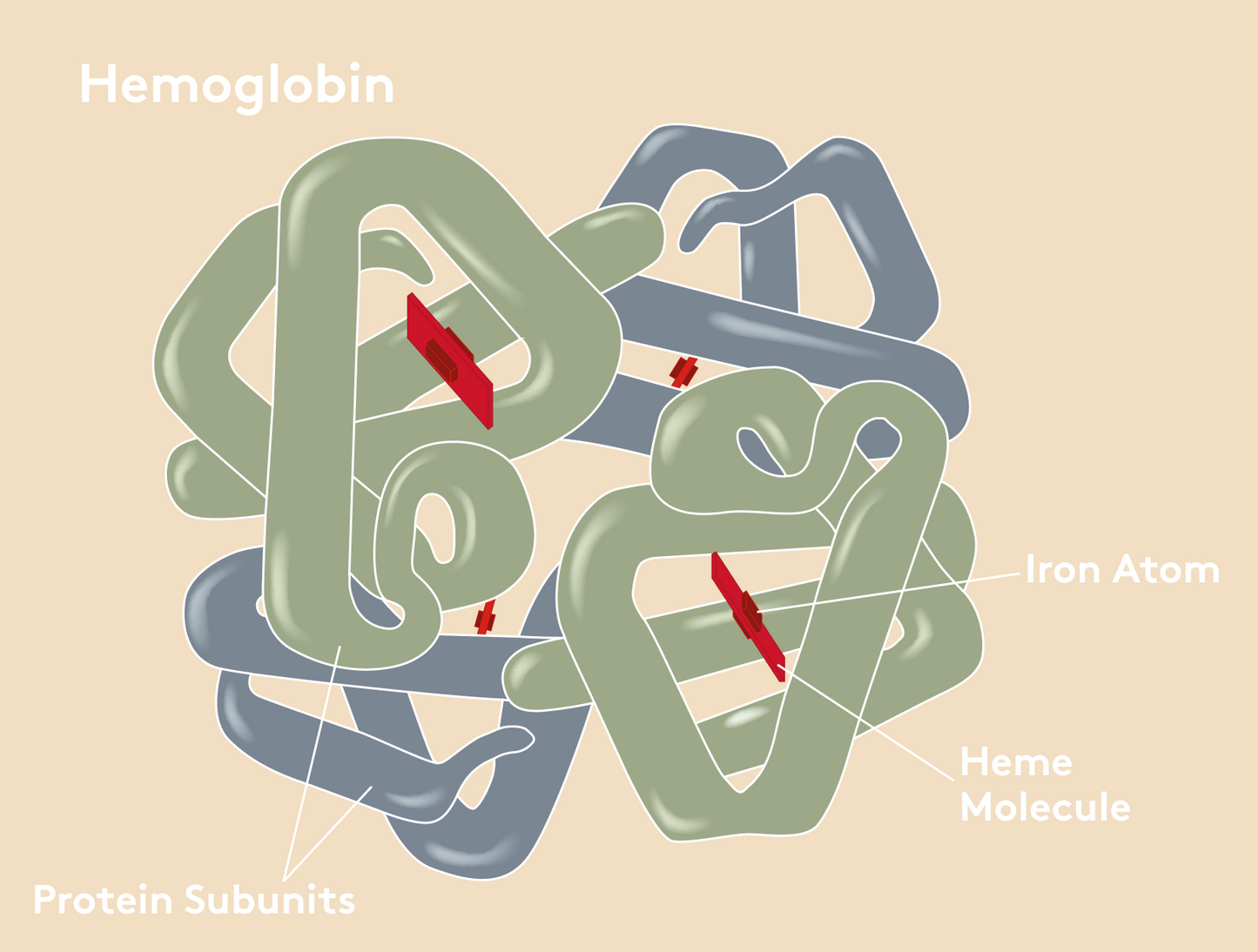

How does the oxygen supply to our cells work?
Girls and women who are menstruating are particularly affected by iron deficiency. For them, the frequency of iron deficiency increases to 20%. However, children and men can also suffer from iron deficiency.
Causes of iron deficiency in women
The fact that menstruating people in particular have too little iron in their bodies is due to menstrual bleeding. On average, women lose around 60 to 80 milliliters of blood per cycle. 40% of this is red blood cells. The loss of blood depletes the iron stores in the body.
Women are also at risk of developing an iron deficiency during and after pregnancy. There are three reasons for this:
- Pregnant women have to supply two organisms with iron and blood - their own and that of the child, whose organs are not yet formed
- The shedding of the placenta during birth leads to a blood loss of up to 500 milliliters
During breastfeeding, the mother supplies the child with many nutrients, including iron.
Iron deficiency is also a problem for babies. During the first few weeks, the blood cells in the baby's body are replaced. If the mother's iron reserves are not sufficient, an iron deficiency can quickly develop.
What causes iron deficiency in men?
Inadequate nutrition is another cause. This is why men are not immune to it either. Foods containing iron therefore belong in every diet.
It should be noted that the absorption of iron through food depends on the availability of iron. For example, if the iron in food is bound to the blood pigment haemoglobin, as is the case with animal iron, it can enter the cell more easily. Plant iron, on the other hand, must be activated in order to reach the cell.
Further causes of iron deficiency
Diet, menstruation and pregnancy are easily identifiable triggers for iron deficiency. However, other, more subtle factors also play a role:
- Hypochlorhydria (under-acidified stomach) caused by medication with acid blockers, infection or stress, and
- SIBO (Small Intestinal Bacterial Overgrowth), which is a bacterial overgrowth in the small intestine that, among other things, hinders the absorption of nutrients such as vitamin B12 and iron
Recognize iron deficiency: Look out for these symptoms
As iron deficiency can have many causes, it is often difficult to diagnose. This is also due to the fact that symptoms of nutrient deficiencies are diffuse. If you suspect an iron deficiency, look out for the following warning signs and discuss them with a doctor:
- Tiredness
- Feeling weak
- Sleep problems
- Lack of energy
- Cold extremities and red or blue hands
- Endurance problems/loss of performance (this is especially true for athletes)
- Headaches
- Dizziness
- Forgetfulness
- Concentration problems
- Pale skin
- Shortness of breath
- Increased susceptibility to infections
- Hair loss, brittle nails
Loss of periods or irregularities
A diagnosis becomes particularly difficult if additional factors are masking your iron deficiency:
- A vitamin B12 deficiency can be the reason for the reduced production of red blood cells; iron deficiency is then not the cause at all, although it looks like it.
- Ferritin is a protein that binds iron and can indicate iron deficiency. According to studies, a value below 40 mg/dl (milligrams per deciliter) is a sign of iron deficiency². However, inflammation can drive the value up and mask an iron deficiency.
What happens with iron deficiency?
One of the consequences of iron deficiency can be that too few or too small erythrocytes are formed. This reduces the oxygen capacity. This is because less haemoglobin is available due to the iron deficiency.
A pronounced deficiency can even lead to iron deficiency anemia. You probably know iron deficiency anemia as anemia. Less blood means an inadequate supply, especially to the tissue of the extremities.
Typical symptoms of iron deficiency anemia are therefore cold and blue hands or feet. If the tissue is not supplied with sufficient blood for a long time due to anemia, this can lead to necrosis, i.e. the death of cells.
How to cover your iron needs
Whether prophylactically or if iron levels are too low, one solution is iron supplementation. The type of iron plays a key role here. The following forms are contained in iron tablets or capsules, for example:
- Active iron; however, stomach complaints occur in 30 to 50% of people due to the reactivity of the iron (ferrous sulphate)
- Vegetable inactive iron; must first be activated (iron extract, e.g. from curry leaves)
- Chelated forms of iron; chelated means that amino acids are bound to iron (iron bisglycinate)
Iron bisglycinate is less reactive and therefore better tolerated. It can also be better absorbed as active iron is bound in it. With chelated forms, smaller amounts of iron are usually sufficient to replenish the stores, as less loss is expected in the stomach and small intestine.
How much iron per day does the body need?
The German Nutrition Society recommends a daily iron intake of 14 to 16 mg for women and 11 mg for men. Iron supplements with a dose of 10-100 mg can be found on the market.
Although very high doses are not toxic, they do cause nausea, stomach problems and other symptoms in some people. It therefore makes more sense to choose a moderate dose with an effective iron compound in the case of iron deficiency.
Which foods contain iron?
Meat is a good source of iron. However, the amount depends on the type of meat you eat, among other things. Chicken, for example, contains hardly any iron.
If your diet is vegetarian or vegan, foods such as seeds, kernels or pulses will help you to get enough iron and cover your iron requirements.
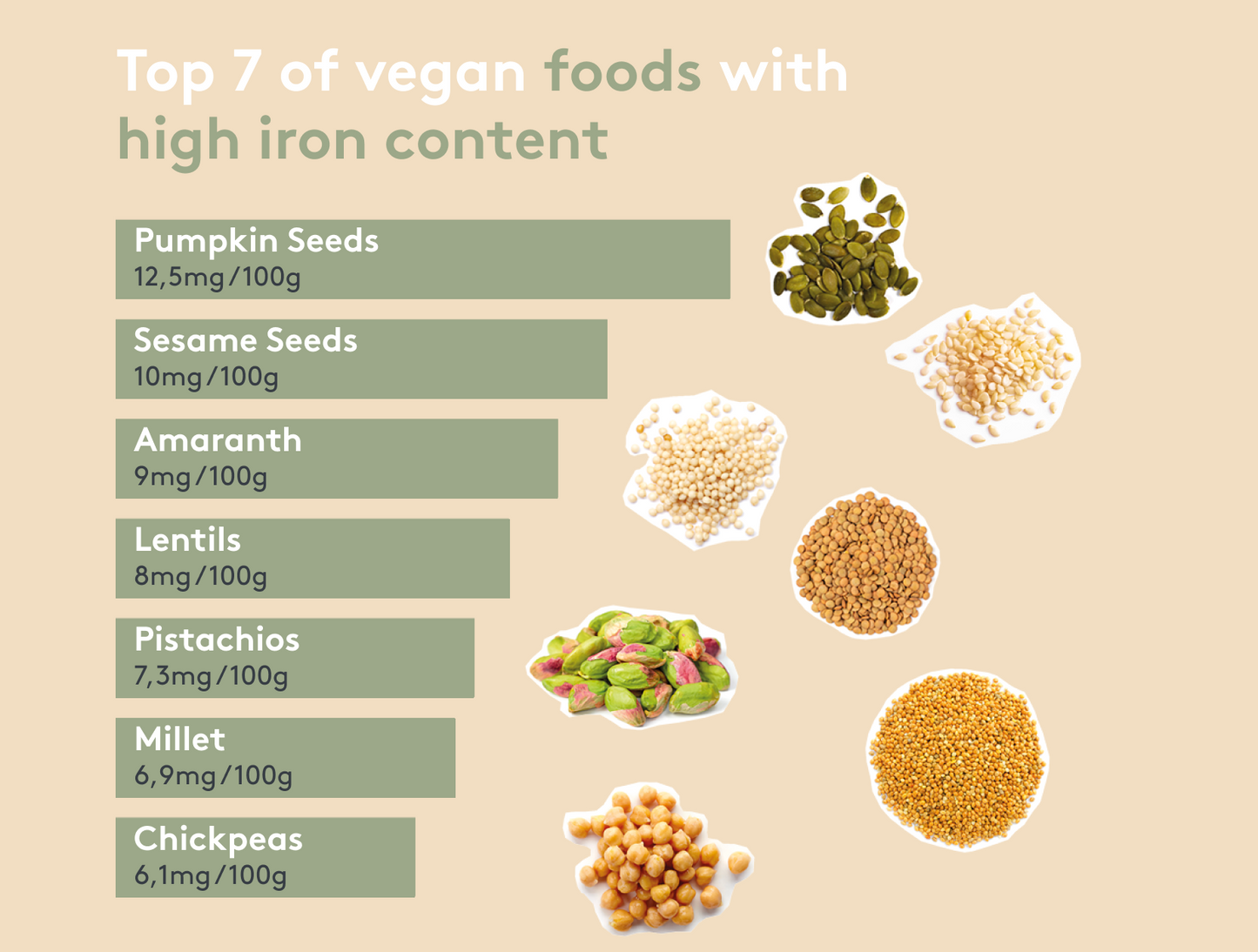

Optimize iron absorption: These nutrients will help you
In the fight against iron deficiency, it is not only the right foods that count, but also which micronutrients you consume. This is because certain nutrients promote iron absorption, while other substances inhibit it. The following micronutrients can help you to remedy your iron deficiency:
- Vitamin C is known to increase iron absorption as it can activate iron
- B vitamins, especially B6, B9 and B12, are relevant in the utilization of iron: Vitamin B9 and B12 are involved with iron in blood formation - if you want to stimulate blood formation with iron, these vitamins are your allies
- A sufficient copper supply should be ensured, as copper deficiency can hinder iron transport
- Lactoferrin can optimize iron utilization³
What is special about lactoferrin?
You may have already come across lactoferrin in connection with breast milk. Among other things, the protein is responsible for iron transport, can bind iron, fight bacteria⁴ and may be helpful in fighting viral infections⁵.
If lactoferrin is saturated with iron before it is ingested with food or supplements, as is the case in breast milk, it enters the intestine in this form and is absorbed intact.
Lactoferrin thus ensures, for example, that iron is
- Almost 100% of iron is absorbed and supplied to the metabolism - conventional oral iron has an absorption rate of 10 to 15%
- Does not need to be activated - the process is therefore independent of stomach acid
- Is not present in free form - so it cannot become reactive (like ingested, active iron) and cause discomfort
- Cannot be absorbed by bacteria - "feeding" a SIBO is therefore impossible
Conclusion about iron deficiency
In order for your red blood cells to do their job and supply your body with important substances, your iron stores should be well filled. By eating a balanced diet, you can help prevent iron deficiency and the consequences such as anaemia and fatigue.
Pregnant women, athletes, children and people who avoid meat in their diet should ensure that certain foods and micronutrients such as vitamin C are included in their diet to cover their requirements and promote iron absorption. Iron deficiency can also be treated with iron supplements in consultation with a doctor or nutritionist.
This article is based on carefully researched sources:
Bibliography
- HEALTHCARE-IN-EUROPE (2021) 'Iron deficiency and anaemia', healthcare-in-europe.com [Online].
- BREYMANN, C., RÖMER, T. & DUDENHAUSEN, JW 2013. Treatment of Iron Deficiency in Women. Obstetrics and Gynaecology, 73, 256-261.
- HAO, L., SHAN, Q., WEI, J., MA, F., & SUN, P. 2019. Lactoferrin: Major Physiological Functions and Applications. Current protein & peptide science, 20(2), 139–144.
- YEN, C.-C., SHEN, C.-J., HSU, W.-H., CHANG, Y.-H., LIN, H.-T., CHEN, H.-L. & CHEN, C.-M. 2011. Lactoferrin: an iron-binding antimicrobial protein against Escherichia coli infection. BioMetals, 24, 585-594.
- VAN DER STRATE, BW, BELJAARS, L., MOLEMA, G., HARMSEN, MC, & MEIJER, DK 2001. Antiviral activities of lactoferrin. Antiviral research, 52(3), 225–239.










